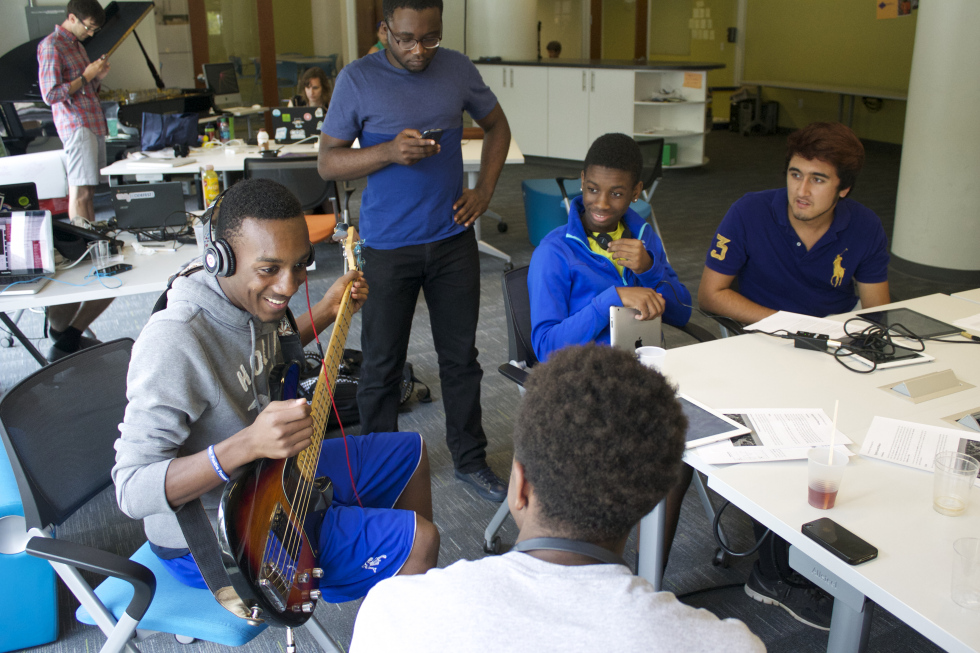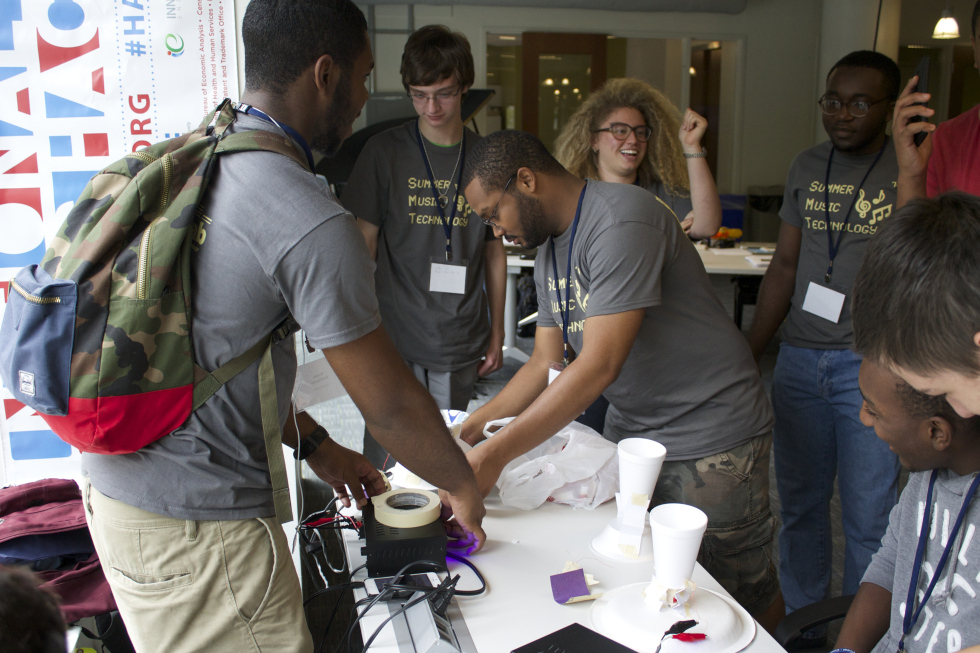 Drexel’s Summer Music Technology program brings high school students to campus for a week of exploration, discovery and invention, with the goal of tying music to innovation in science and engineering. This summer marks the 10th year of the program, which started in Youngmoo Kim’s Music Entertainment Technology Lab in 2007, and has grown into an institution at Drexel’s Expressive and Creative Interaction Technologies (ExCITe) Center.
Drexel’s Summer Music Technology program brings high school students to campus for a week of exploration, discovery and invention, with the goal of tying music to innovation in science and engineering. This summer marks the 10th year of the program, which started in Youngmoo Kim’s Music Entertainment Technology Lab in 2007, and has grown into an institution at Drexel’s Expressive and Creative Interaction Technologies (ExCITe) Center.
About two dozen students have joined Kim’s talented group of facilitators this week to learn about musical technology in the best way possible: by building, creating, and playing with it.
In addition to introductory activities, like building speakers out of household items, such as paper plates and cups, participants delve into the electronic, computational and robotic depths of today’s music technology. Each student pursues an individual project throughout the week, which is highlighted on the final afternoon in a showcase event that combines project presentations, demonstrations, and music performances.
 One of the primary successes of the program, according to Kim, founding director of the ExCITe Center, has been its inspiration and encouragement of creativity that links the arts and technology — a unique vision of the STEAM (Science, Technology, Engineering, Arts & Design, and Math) philosophy at the core of ExCITe. The Summer Music Technology program does this by constantly evolving to incorporate the latest technologies and emerging techniques in music and sound creation — from developing custom iPad apps for investigating and manipulating sound, to teaching robots to play musical instruments.
One of the primary successes of the program, according to Kim, founding director of the ExCITe Center, has been its inspiration and encouragement of creativity that links the arts and technology — a unique vision of the STEAM (Science, Technology, Engineering, Arts & Design, and Math) philosophy at the core of ExCITe. The Summer Music Technology program does this by constantly evolving to incorporate the latest technologies and emerging techniques in music and sound creation — from developing custom iPad apps for investigating and manipulating sound, to teaching robots to play musical instruments.
Here are a few of the student projects from the last 10 years of tunes and tech in the program (all developed by high school students in less than a week!):
1. The Human Piano: In 2013, a student created a device that enabled him to tap (fist-bump) other students to trigger different musical sounds.
2. The Self-playing, self-tuning guitar: Using an Arduino mictrocontroller, in 2014 students in the program built a system to automatically tune, finger, and pick a guitar.
3. Super Mario Bros. Live: For a musical performance in 2015, SMT students collaborated on a live version of the Super Mario Bros. theme song, recreating the original 8-bit sounds with custom-built touch-sensitive controls accompanied by a background video from the game.
4. An iPad-playing Robot: 2015 projects featured many robotic instruments. One of the most novel was a robot built with K’nex pieces and servo motors that moved to play different chords and harmonies on an iPad musical keyboard, accompanying a vocal performance.